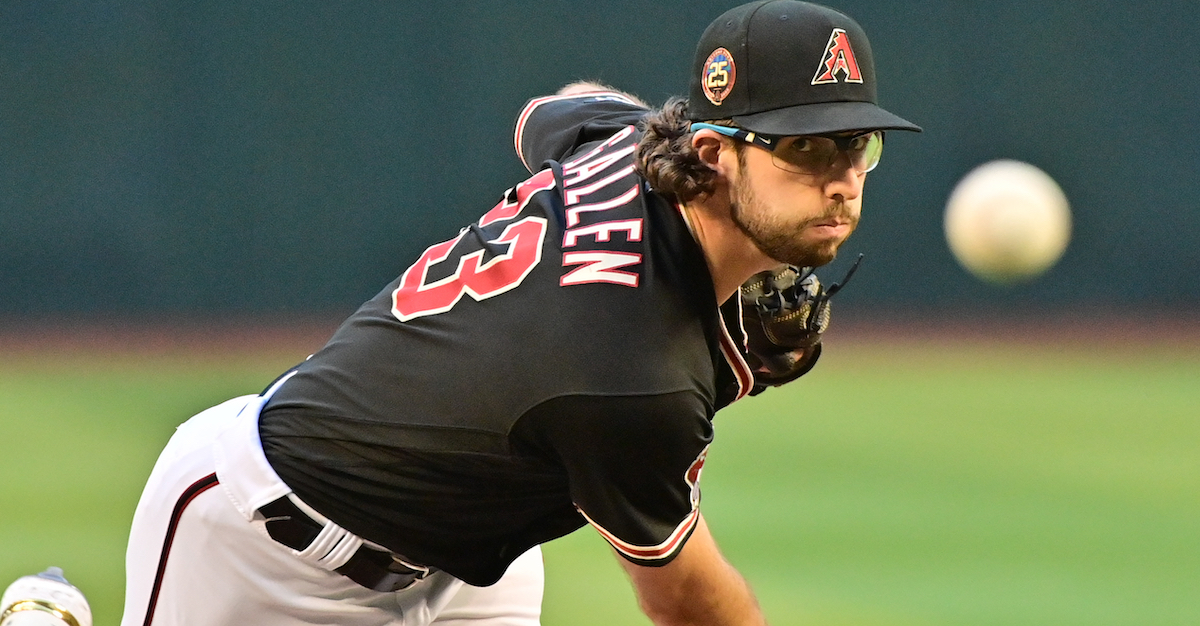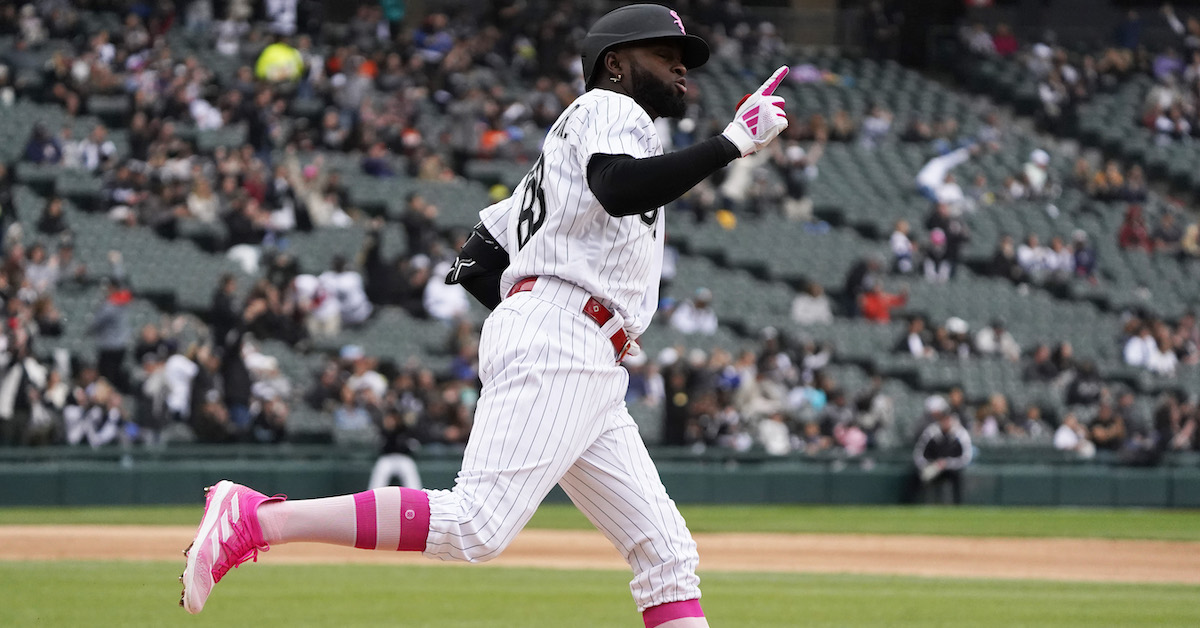Gunnar Henderson Is off to a Slower Start Than Expected

Coming into the season, two players were the obvious front runners for their respective league’s Rookie of the Year award: Corbin Carroll and Gunnar Henderson. Not only were they each elite in the minors in 2022, they both came up to help their big league club late in the season and continued their incredible all-around play. Carroll hasn’t skipped a beat in 2023. He has a 140 wRC+ and 13 stolen bases, and has played good defense. But despite posting a 125 wRC+ in 132 plate appearances in 2022 — a performance that suggested he would hit, hit, and just keep on hitting — Henderson has struggled so far. After 161 plate appearances this year, he sits at a 103 wRC+. The holes that were present in his game in the minor leagues before 2022 have popped back up, leading to a 31.1 K% and a bottom-decile whiff rate.
Let’s go over a few notes from Eric Longenhagen’s offseason report on Henderson. I want to focus on three things: a worse than average in-zone whiff rate, a surgically precise approach, and huge all-fields power. For better or worse, these three aspects of his profile are all holding up almost perfectly. Right now, Henderson’s in-zone whiffs are indeed below average. This year, the league-wide in-zone whiff rate on fastballs is 16.9%. Henderson’s mark is 33.3% after being much better last year at 23.4%. Now let’s go to the good parts. His approach still seems to be surgically precise. His 20.4% chase rate is in the 89th percentile, so it’s not like pitchers are suddenly getting him to leave his ideal zones, and his highly impressive 16.1% walk rate has carried his offensive production this season. Lastly, his all-fields power is still present. He has two 400-foot home runs to left field and another that went so deep to right field in Kaufmann Stadium that the camera could hardly track it. I say all of this because it means Henderson is still who we knew him to be. But the main hole in his game is being exposed more in this year’s sample than last year’s. That’s what this piece will explore.
When such a talented hitter experiences a 10 percentage point jump in his whiff rate on fastballs in the zone, my mind immediately goes to two things: swing decisions and mechanical changes. I’ve already mentioned that it seems like Henderson’s approach hasn’t faltered out of the zone, but let’s double check that the trend holds in the zone – particularly at the top of the zone, since that’s the potential hole in his swing that we already have knowledge of. Interestingly enough, his swing rate has significantly decreased in the upper third from last season. In 2022, he swung at 72.4% of the pitches he saw in this zone; this year, it’s only 37.8%. Given that we know Henderson’s approach is so sound, it makes sense that he would try and cut down on swings in this zone. However, despite this logical downtick, Henderson has nearly doubled his Whiff% from 28.9% to 52.6%. This brings me right back to the other part of the investigation: his swing mechanics. Below are two swings from 2022, followed by another two from 2023. Each pitch is a fastball in the upper third:
2022
2023
The two swings from 2022 were both barrels hit over 100 mph. Eric noted in his report that one of Henderson’s key skills is his ability to let the ball travel deep into the zone before driving it to the opposite field. Both swings from 2022 displayed this ability, and the one against Justin Verlander’s nicely located four-seamer was even more impressive. If you have a hole in your swing and can still occasionally barrel the ball when pitchers attack that hole, you’re going to be alright. If you can’t get to that barrel, like what’s happening so far this year, then it becomes more of a concern.
Henderson’s swing against Reynaldo López wasn’t necessarily a bad one. It was hit at an ideal 27-degree launch angle. But it wasn’t hit nearly hard enough (88.7 mph) and resulted in a can of corn fly out. Similarly, against Josiah Gray, Henderson couldn’t get to quality contact and fouled the pitch straight back. I picked these two swings because each pitcher’s four-seamer hasn’t performed well this season (> .500 SLG%). It’s my quick way of showing that Henderson isn’t getting to four-seamers with sub-optimal pitch shapes. These are pitches that you’d expect most good hitters to have a decent shot at barreling up, especially one with Henderson’s skill and power. But he is either missing them altogether or not squaring them up.
Earlier this week, I talked about how Vertical Bat Angle (VBA), the angle of a hitter’s barrel at impact, could be a factor in explaining these types of fluctuations in a hitter’s performance and habits. However, this most likely isn’t the case with the struggling rookie. His VBA last September/October was 34.5 degrees; in the first month of this season, it was 34.6. Instead, I’d like to focus on a different measurement of bat path called Vertical Entry Angle (VEA), also courtesy of SwingGraphs, and its relationship with VBA. SwingGraphs defines VEA as the angle of the bat 83 milliseconds before contact, but for simplicity’s sake, it’s basically the angle of the bat right at the start of the downswing.
In this piece, D.K. Willardson presents data explaining how excessive flattening in bat angle from VEA to VBA can be a bat speed killer. This makes intuitive sense. From a pitching perspective, we know that having an asymmetrical relationship between the direction of your left and right arm can be a velocity killer. Luis Castillo needs a side-swiping glove to match his side arm slot, and Verlander needs a vertical glove tuck to match his high arm slot. Doing otherwise might kill their velocity. From a bat speed perspective, a hitter entering the zone at an extreme vertical angle and adjusting their bat too much to a flat angle can throw off the connection between their torso and hips and effectively decrease their rotational velocity. Now, let’s focus on how that relates to Henderson.
Last year, the degree of flattening between Henderson’s VEA and VBA was 15.4 degrees (49.9 to 34.5). In April, that number increased to 17.2 (51.8 to 34.6). The question is, did that result in any batted ball differences for Henderson? Well, yes it did. His max exit velocity is down 1.7 mph from last year, while his average exit velocity is down 1 mph. These fluctuations seem small, but Henderson was already teetering quite close to flattening out too much. Per SwingGraphs, that gap between VEA and VBA is the 11th highest in all of baseball this year and puts him next to other struggling hitters such as Alec Bohm and Trent Grisham. For Henderson, a slight dip in bat speed is a pretty darn good explanation for why he might struggle to cover the top of the zone. This might strike you as a bit too theoretical, but the results (quality of contact and whiffs) both track well with this explanation.
So how might the Orioles communicate this information to him (or another hitter with a similar issue)? For that, we’ll look at some slo-mo video. The first clip is a slowed down version of the swing against Verlander, while the second is the swing against López:
Unfortunately, I’m not an overlay wizard, so I can’t draw a distinct line at VEA, but the slo-mo video should help you see that the angle of his bat this season is steeper as it begins it descent. Henderson is obviously quite good at adjusting his bat angle according to pitch height, but by starting his entry more vertically, he’s forced to adjust his bat angle even further to get to the plane of the high fastball. All hitters have to adjust their bat angle at the top of the zone, but the more you increase how much you need to adjust it, the more time you spend getting to your ideal angle. The video suggests two potential options. The first is to cue the top of his bat in a different direction than he currently is if he wants to start his entry just a little bit flatter. The second is to slightly adjust his hand setup to start on the plane where he wants to be.
I know, all of this just to say he needs a cue to slightly change his entry into the zone. But with hitters this skilled, small changes are usually the difference between a slump and a hot streak. And it’s not like Henderson is hitting that poorly anyways. It’s more just that he isn’t performing to projections and probably his own expectations, especially when it comes to swing and miss. I expect him to get it going pretty quickly. He is simply too good to not be a force in the already gaudy Orioles lineup.









